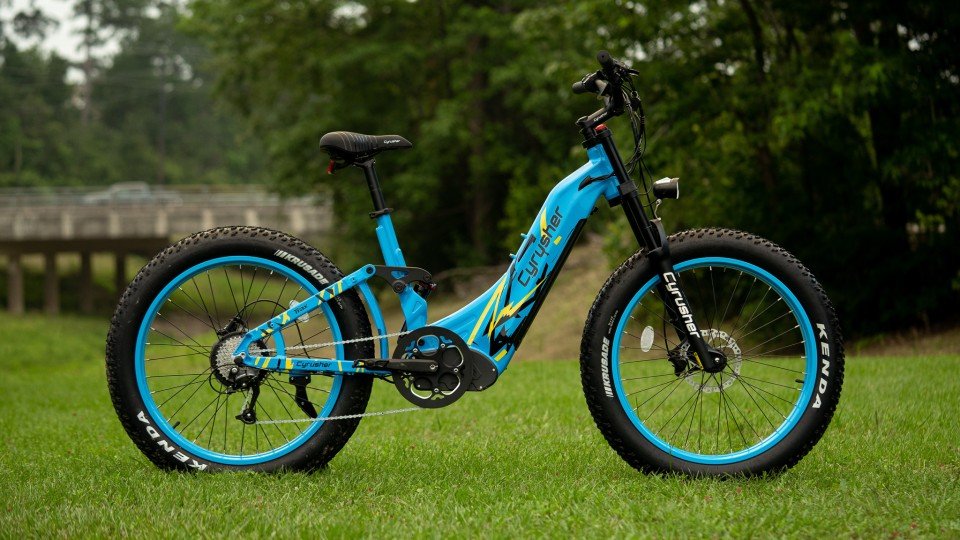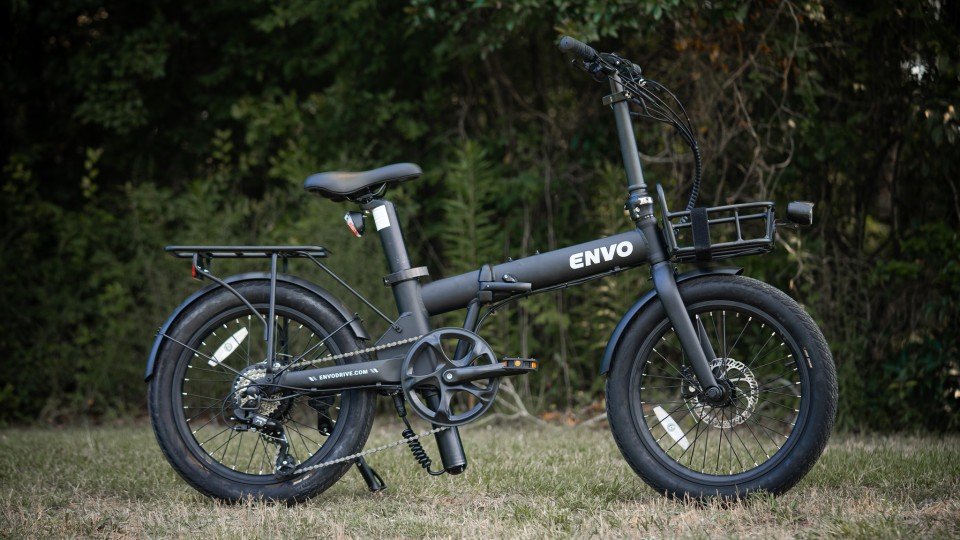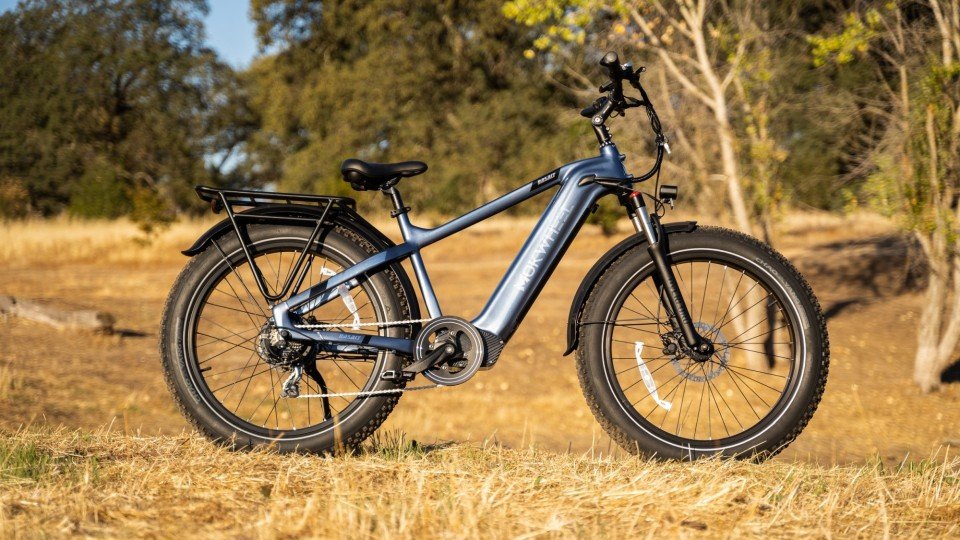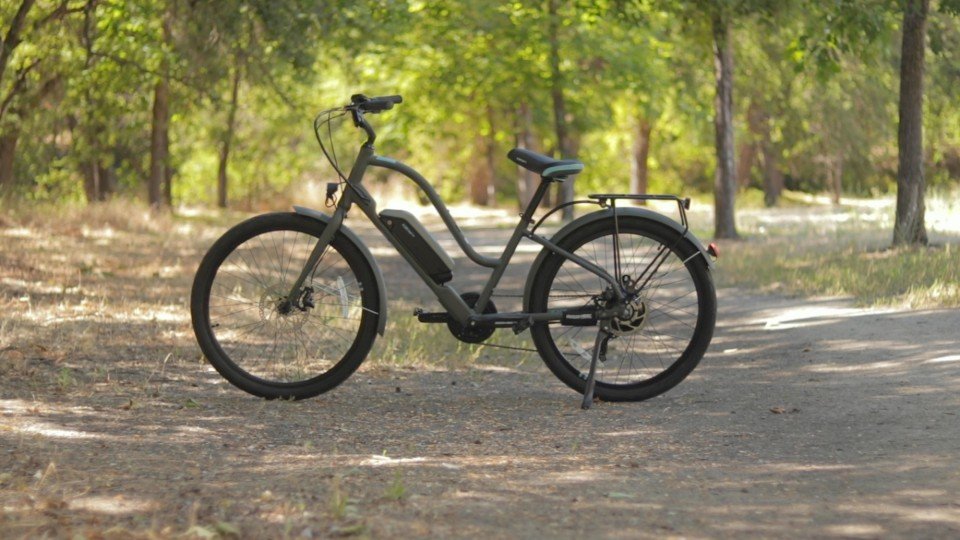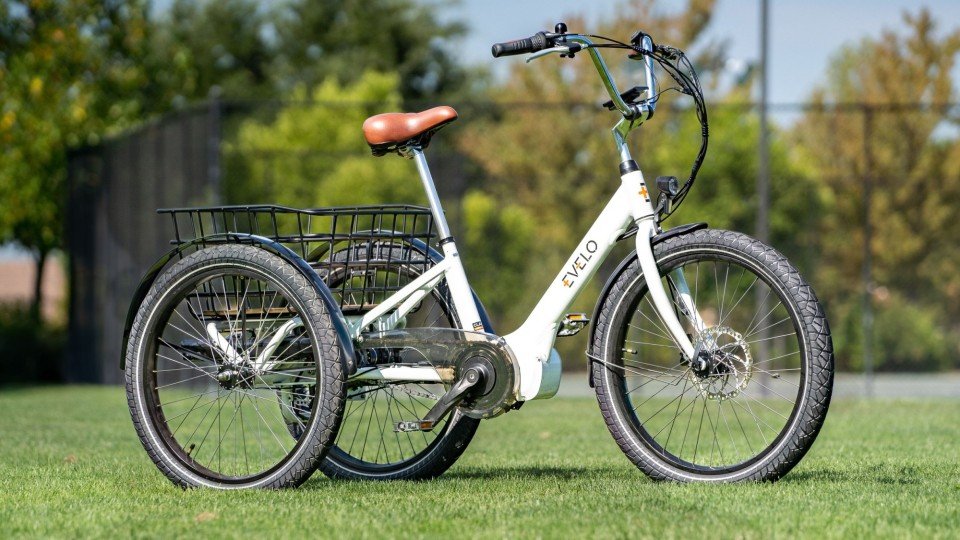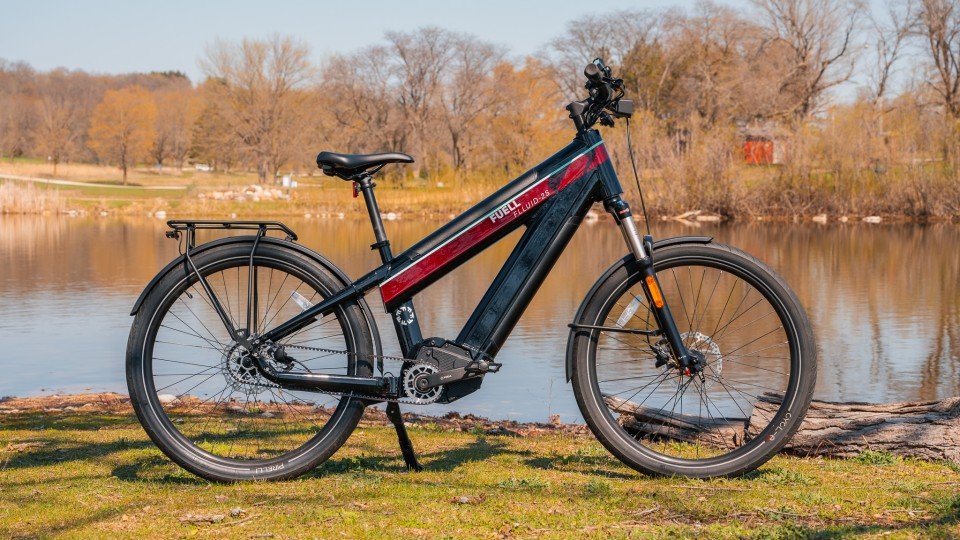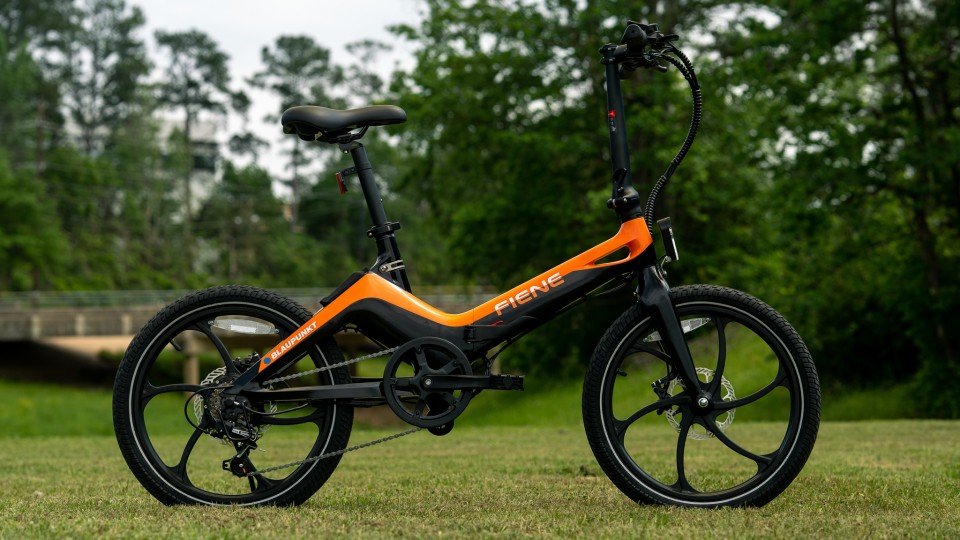Fat tire Ebikes come in many flavors, with one thing in common: Big fat tires! This category includes all electric bikes with tires wider than 3.5 inches, with the most common with being 4 inches. Fat tires add extra stability and traction, and can eliminate the need for suspension thanks to the extra air cushion. Most fat tires can be set as low as 5 PSI which allows riding on extremely soft terrain like sand and snow - but you'll lose a lot of range riding like this!
Some people out there want an Ebike, but they want it to fold in half like a fresh New York slice. Now, these bikes aren't made of pizza, but they do fold. Folding Ebikes generally fold in the middle of the frame and often have folding stems, though that is not always the case. Folding Ebikes can be useful if you need to store them in a small environment, haul in a car or SUV, or want to pack it up in your RV. Kenny Rogers may have been a secret Ebike guy. We'll never know.
What makes an electric bike "affordable?" Everyone will have a different opinion, ours is "it costs less than $2,000." Ebikes in this category tend to offer good value for money and we recommend starting with one of these if you've never owned an electric bike before.
Technically any electric bike can be used for commuting, but a purpose-built commuter will make the experience much easier - and more enjoyable! Good commuters have fenders for bad weather, front and rear lights for safety and visibility, a cargo rack or basket, and medium-width tires with hybrid tread for a good mix of grip and efficiency. Larger diameter wheels and front suspension go a long ways to improving comfort, and a removable battery is also a must so that you can bring inside with you, both for safekeeping and in case you need to top off the charge for the ride home. Some bikes in this category might not come equipped with all of these components by default, but the manufacturer makes it easy to add them when purchasing.
These Ebikes have 3 wheels. Need we say more? Our SEO guys say yes. An electric trike is a great choice for riders that have issues with balance and stability. Some trikes feature a rear differential, allowing you to make zero-degree turns and help keep both tires on the ground when riding. Some trikes are designed to be leisurely rides, while others incorporate baskets, or even incorporate back seats, reminiscent of a rickshaw. Some SEO guys are now satisfied with the length of this category description.
The legal definition of Class 1 is "electric bikes with a top speed of 20mph and no throttle". These ebikes have pedal-assistance and many are equipped with efficient and responsive mid-drive motors.
The legal definition of Class 2 is "electric bikes with a top speed of 20mph and a throttle." These ebikes almost always have pedal assistance in addition to the throttle.
The common legal definition of Class 3 is "electric bikes with a top speed of 28mph and no throttle." Unfortunately, actual ebike regulations vary wildly by state and even city, and enforcement is even more unpredictable. For the purposes of this website, Class 3 means "electric bikes with pedal assist and a top speed of 28mph, which may or may not have a throttle that cuts off at 20mph".
Mid-drive electric bikes have a motor mounted in the bottom bracket (right between the pedals). While more expensive than wheel-mounted hub drive motors, mid-drives offer increased efficiency and power because they use the same drivetrain as the human-powered pedals. When you shift down to a lower gear it gives the motor a mechanical advantage that makes a huge difference when climbing hills! Mid-drive motors typically have advanced sensors for smooth and responsive pedal assist and generally provide a better riding experience than most hub-drive motors. This isn't to say that mid-drives don't have downsides; you'll need to replace drivetrain components (such as chain and cassette) more frequently, and more powerful motors can even snap chains if you push them too hard. Most mid-drives only support pedal assistance, so if you're set on having a throttle you should consider a hub drive instead.
These ebikes are in it for the long haul! Range is a fickle detail that varies greatly. Dirt or gravel will eat up your battery much faster than smooth payment, hill climbing even more so. If you're a larger-than-average person and you like to hammer down on the throttle 24/7... don't expect to get very far! Wind resistance, tire tread, pedal assist tuning, cargo... the list goes on and on, but regardless of these factors most modern electric bikes can manage at least 15-20 miles on a single charge.
We consider an electric bike to be long-range if it can go a minimum of 35 miles on a single charge. Keep in mind, this is a worst-case scenario; in normal riding conditions with limited throttle use you should be able to get at least double the estimated minimum range. Long range bikes are great for anyone who doesn't want to worry about range anxiety, or to deal with the hassle of bringing a charger along.
With the rise of Uber Eats, GrubHub, DoorDash, Post Mates, and Favor, tons of urban delivery jobs have become available, and are being run by riders of Ebikes in all shapes and sizes. While you could probably deliver a Taco Bell feast at 2 AM on any old Ebike, there are some that have been designed with this purpose in mind, or at least, offer the things we'd look for in an Ebike, if we decided to stop doing reviews and deliver you food.
When you're on the move, you need an Ebike that can fold, has some decent range, and can handle any sort of terrain you might come across, such as campgrounds, light trails, or city streets. These Ebike are perfect for RVers, travelers, or anyone that is tight on space.
